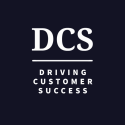How This Customer Success Leader Uses Smart Segmentation to Keep 110k Customers Humming
Monday.com went from a local startup to an international company in the span of four years. During these four years, the company grew from a few thousand customers to over a hundred thousand. From a customer success perspective, this kind of growth needs to be handled with the utmost care to ensure customers aren’t impacted by the growth as far as the quality of service and support they are receiving.
Tom Ronen, monday.com’s Head of Customer Success, was at the helm during the entire growth spurt. As such, Ronen holds actionable insights into how to manage a customer-facing operation and how to lead an ever-expanding team.

At the beginning of April Ronen spoke in a KMS Lighthouse webinar about the challenges of scaling customer experience and how Monday.com utilized automation to that end. We reached out to Ronen after the webinar to get more actionable insights for SaaS customer success teams on how to manage growth.
During 2020 monday.com has experienced fantastic growth. Can you give us a glimpse of how it feels from the inside?
It has been an incredible experience to be part of our rapid growth. In an ever-changing environment, scaling so quickly has kept us motivated to think and act fast on our feet.
Especially from a CS (customer success) perspective, we’re always learning about new use cases and different kinds of people around the world using our Work OS. By depending on data, being transparent, and always putting our customers first, we navigate the changes to the product, new types of customers, new languages, and more. All that to say – every day is a new adventure!
As far as customer growth, according to data provided by the company, there are currently over 110,000 paying organizations. When you first joined, how many clients did you have?
When I joined the company, we had just over 3,000 paying teams. At the time we were just 25 people working out of our offices in Tel Aviv. Today, monday.com is used by over 110,000 organizations from over 190 countries with over 600 employees across offices in Tel Aviv, New York, San Francisco, Miami, London, and Sydney.
How did you handle this growth from a personal perspective? Being in charge of a few thousand clients compared to a hundred thousand, are there different self-imposed rules you manage yourself by now?
Personally, I have always made sure that we as a team are transparent with one another, allowing data to drive our decisions. With so much going on, at times you lose sight of the forest for the trees. Data is what shows us the way. For example, a dashboard that aggregates what features are being requested the most to reflect the voice of our customers to our Product team.
With such rapid growth, teamwork is essential. By sharing information with the brilliant people surrounding me, I ensure that we are all on the same page, and can see the full picture, moving forward together, creating impact, and bringing value to our customers and the company.
Now professionally speaking, how did you ensure that monday.com’s clients get the same support throughout the growth spurt? Can you share your “tips & tricks” for maintaining consistent CX?
We always put our clients first, and throughout our growth, staying client-centric has been integral to our success. While some practices changed, the goal never did – keeping our customers happy. For over three years our average response time for every support ticket was less than 10 minutes. Today it’s a couple of hours, which remains world-class in our industry. What I’m most proud of is how we lead the way in how it’s easy for our customers to get support.
Customer Experience (CX) is all about exceeding customer expectations and these vary from case to case. One way of doing this is by properly prioritizing customer inquiries through a deeper understanding of context. Think of a customer angry over a software bug versus a nice-to-have feature request; insight into the mindset behind the inquiry allows you to match the level of service needed to win a customer over.
Another important practice is to segment your customers to meet their expectations. Enterprise customers are used to doing business in a very specific way and expect service accordingly. By simply segmenting your customers you can learn more about each customer’s appropriate experience and create an experience that is right for them.
Many SaaS companies are struggling to keep ‘good relations’ with their clients due to the low-touch nature of the product. From your experience, what can Success Managers do to negate the low-touch and ensure their clients feel cared for?
Our customers, at the end of the day, want to be able to make use of the platform in the best possible way. Our goal is to make sure they can reach that desired outcome seamlessly and easily, with or without our touch.
From my experience one of the most important values in successful low-touch CS is transparency. You don’t want a customer to think they are engaging with a dedicated success manager while in fact, they are interacting with a bot. Data-driven automation and personalization are key as well, as you can deliver an amazing low-touch experience with the right tools and data.
Many SaaS companies need to adopt a low-touch CS approach since there’s almost no way around it. Customers have desired outcome from your product in mind. As long as you are able to deliver on it they will be happy.
Another pain point for SaaS is the Freemium to Paid jump. You need the Freemium to attract new clients, and you need the Paid because, well, it’s a business after all. What can other SaaS companies learn from monday.com’s experience about creating that ‘magic balance’ of features between the two – make the Freemium attractive enough to join AND the Paid worth their credit card?
For us, it always comes back to the customers’ needs. I’ve always encouraged my teams to work towards understanding where to draw the line through feedback from our users. A great example is that, for clients that express interest, we make specific features that are usually blocked available for a trial period in addition to the premium features. This way they fall in love with the features they will be paying for. It’s a challenge that you have to iterate through to find the right answer.
We have a dedicated Product team that runs myriads of tests with different versions to learn where we should draw the line between freemium and paid features. This approach helps ensure that customers who sign up for the paid version will stay with it as they aren’t surprised by any lack of functionality.
Looking internally, you now manage a team of 30 success managers, a team you grew over the past four years. What are your top three pieces of advice for team leaders for managing expanding teams?
Strong leadership: Hire or promote amazing leaders and empower them to elevate other managers into leaders themselves.
Quality over quantity: The pressure to give in to high demand for manpower is tough. Don’t give in, hire only amazing people to take your team to the next level.
Culture: Be intentional about building your team’s culture. Culture changes fast during growth, so lead by example and show your team what is expected.
Do you find similarities between onboarding a new client and ‘onboarding’ a new team member?
Yes, there are many similarities. My team members are my customers. A structured onboarding process helps ensure a successful result with both employees and clients.
In CS our first step is understanding our customers desired outcome from the product. With team members, it’s important to understand their passions, their goals, and style to create a supportive environment to bring out the best in them.
Personally, with my team, I make sure to learn what their career goals are and what they enjoy at work to be able to give them the best experience that will bring out the best in them.
Last question – and be honest – does your team use monday.com? And what is your ‘dream feature’ you keep nudging Product about?
We are power users of monday.com! When the pandemic hit early last year, it was only due to the fact that our entire workflow was monday-based that we managed to transition the entire company worldwide to remote work within 24 hours. Our day-to-day had already ‘lived’ on the platform, and still does!
My dream feature will be to upgrade our Llama Farm feature that visualizes all of my monday.com data in the form of colorful llamas to include more animals 🙂 – Insider Monkey Interviews

Hakan Ozturk
Founder, theCScafe.com, #1 Weekly Customer Success Newsletter
Hakan Ozturk is a Paris-based Customer Success leader with over 15 years of experience in the computer software industry. Passionate about driving growth and delivering value to strategic customers, Hakan has established himself as a trusted industry expert. As the Founder of The Customer Success Café Newsletter and TopCSjobs.com, Hakan provides valuable industry insights and daily-updated job opportunities worldwide in the field of Customer Success. Connect with Hakan to boost your career in CS and your company’s potential for massive growth.

Leave a Reply